Great Comic Book Artists
Jack Kirby was just the beginning
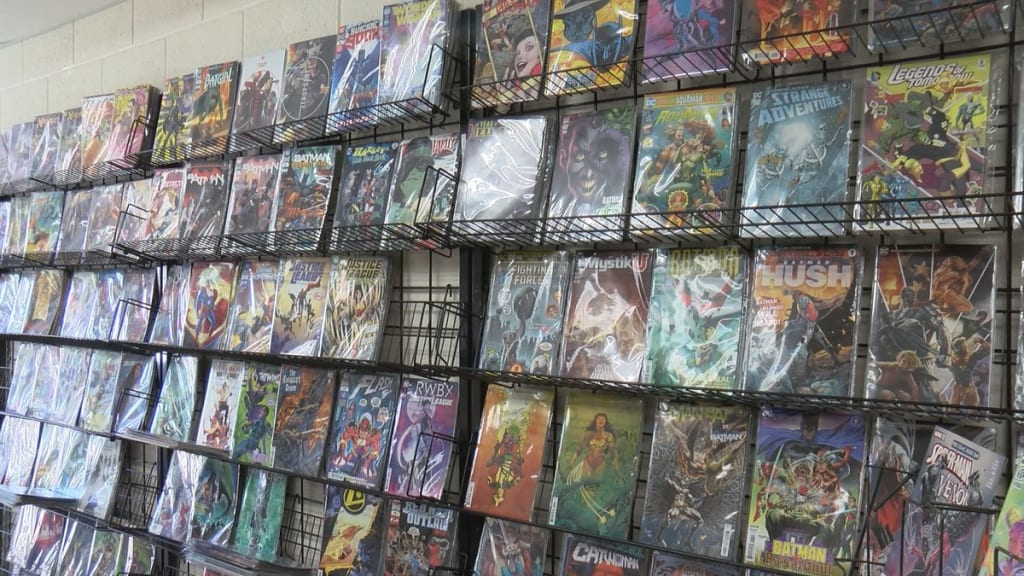
Comics are of course a visual medium, and the artist has the difficult job of designing the characters, creating a cover that attracts reader's attention, and carrying the story page by page. Naturally some are better at it than others, but some artists are rightful legends and ground-breaking pioneers. You may know of some of them, but there are likely a few you don't.
Jack Kirby

Jack Kirby wasn't the first artist in comics. The medium started out decades before, mainly reprinting newspaper comic strips. But Kirby was solidly in the game as of the 1940s when he co-created Captain America with writer Joe Simon. He continued working through the 50s, and in 1961 he and Stan Lee co-created what came to be known as the Marvel Universe. While Kirby didn't work on all of the titles and characters, he at least launched the books and characters of Iron Man, Thor, the Incredible Hulk, the Black Panther, the Inhumans, the original X-Men, the Silver Surfer, and the Fantastic Four. He then went to work at DC where he worked on Superman and other titles before starting his Fourth World project, centered on Mister Miracle, the New Gods, and Darkseid, the ultimate villain. At that point Kirby was working as both writer and artist, which he continued to much of the time when he returned to Marvel, creating Machine Man, Devil Dinosaur, and the Eternals. From his creative genius to his action sequences to the famous "Kirby dots" indicating crackling power, his contribution to comics cannot be overestimated,
Bob Kane

For decades it was thought that Bob Kane was the primary creator of Batman and his mythos, though Kane himself later admitted that writer Bill Finger was responsible for at least half of it. Still, it can't be denied that Kane was a great Golden Age comic artist whose use of light and shadow gave the early Batman comics a noir feel. He also created or co-created the initial designs for many of the great Bat-characters, such as Catwoman, Robin, and the Penguin.
Jack Davis

EC Comics was the home of classic horror, sci-fi, and crime comics years before launching the legendary Mad magazine. Working with a stable of top artists, EC made heavy use of Jack Davis, whose style on titles such as Tales from the Crypt helped bring out both the horror and humor elements of the stories. Davis had one of the most recognizable styles in comics, making every panel simultaneously dark, disturbing, and wacky like no other.
Wally Wood

Wally Wood was another house artist at EC Comics, who came to prominence on Shock SuspenStories and Weird Science, where his plain but elegant style made complex creations seem understandable yet engaging. He adapted that style to stories for Mad, to make it simple and goofy while not overly cartoonish. At Mad, Wood provided art for one of the earliest classic Mad stories, "Superduperman," which spoofed DC's lawsuit against Fawcett Comics over the Captain Marvel character.
Wood's most lasting contribution may have been at Marvel, where he redesigned Daredevil's costume, tossing out the original yellow and red outfit for the new, streamlined, iconic all-red costume the character wore for decades afterward.
Steve Ditko
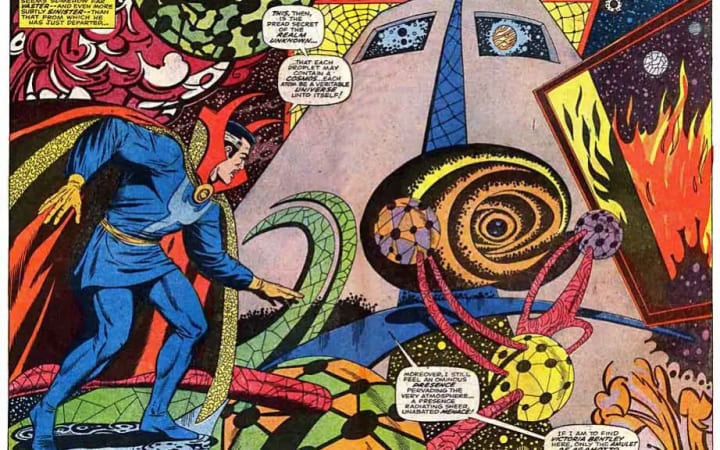
When discussing the history of Marvel, people typically talk about Stan Lee and Jack Kirby as the ones who started it all. But that's not true. There were others, with one giant standing out among the rest as the co-creator of the most iconic character in the Marvel Universe: Spider-Man. And that co-creator is Steve Ditko. As with other artists at the time, Ditko worked in the 50s for any publisher he could, doing stories in any genre. He did a considerable amount of work for lesser-known Charlton Comics, where he co-created Captain Atom as well as other characters, before coming to work for Atlas Comics, which was later rebranded as Marvel. At Marvel he worked on many of the horror and sci-fi titles before being the original artist on "The Amazing Spider-Man." Ditko was also the regular and some would say definitive artist on the Dr. Strange series running in "Strange Tales." On that title, Ditko made the worlds Dr. Strange explored psychedelic and mind-bending, wondrous and terrifying.
Ditko left Marvel in 1966 for his own reasons, but continued to work for Charlton and DC, creating or co-creating Blue Beetle, The Question, Hawk and Dove, and others.
John Romita

If you're familiar with his work, what probably comes to mind immediately upon hearing the name "John Romita" is "Spider-Man." While he started working in comics back in the early 50s, on war, romance, and horror comics what made John Romita a legend was his work on "The Amazing Spider-Man after the departure of co-creator Steve Ditko. Romita gave the character and book a new look, and during his tenure the title surpassed "Fantastic Four" to become Marvel's top seller. While on the title, Romita co-created classic characters such as the Kingpin, the Shocker, and the Rhino, and in one of the most iconic panels in comics finally showed readers what Mary Jane Watson looked like, after Peter Parker avoided her for months, assuming she was not attractive.
Later, Romita was promoted to the position of Marvel's Art Director, where he designed or contributed to the design of many characters, including Wolverine, the Punisher, Luke Cage, Bullseye, and Tigra.
Frank Frazetta
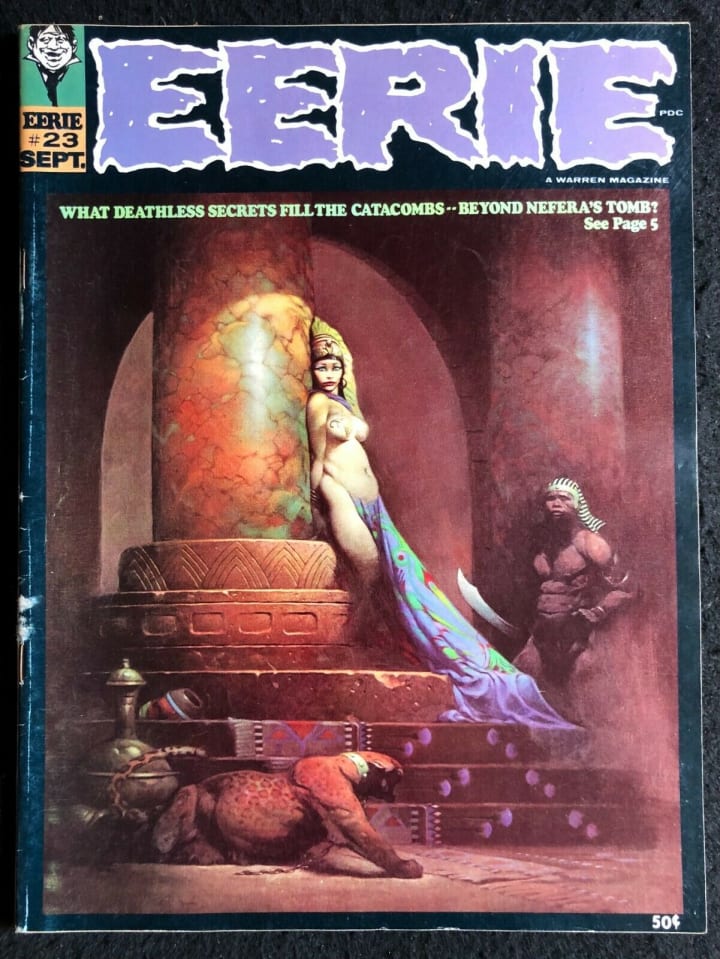
There are documented stories of musicians such as Mozart or Elton John playing at an early age. Mozart wrote his first composition at age 5. Similarly, Frank Frazetta was drawing constantly long before he had instruction. He noted in late interviews that he drew on all the paper in the house, including at times the toilet paper. He was encouraged by his family, who enrolled him in art school at age 8. By his teens he was producing art for comics such as "Famous Funnies." Later he was part of the powerhouse art team at EC Comics, eventually working on parodies for "Mad" magazine. Frazetta gained more fame doing covers for science fiction and fantasy paperbacks, particularly the "Conan the Barbarian" series. Always working, he continued to work in comics, specializing in covers for black and white comic magazines such as "Creepy" and "Vampirella."
John Buscema
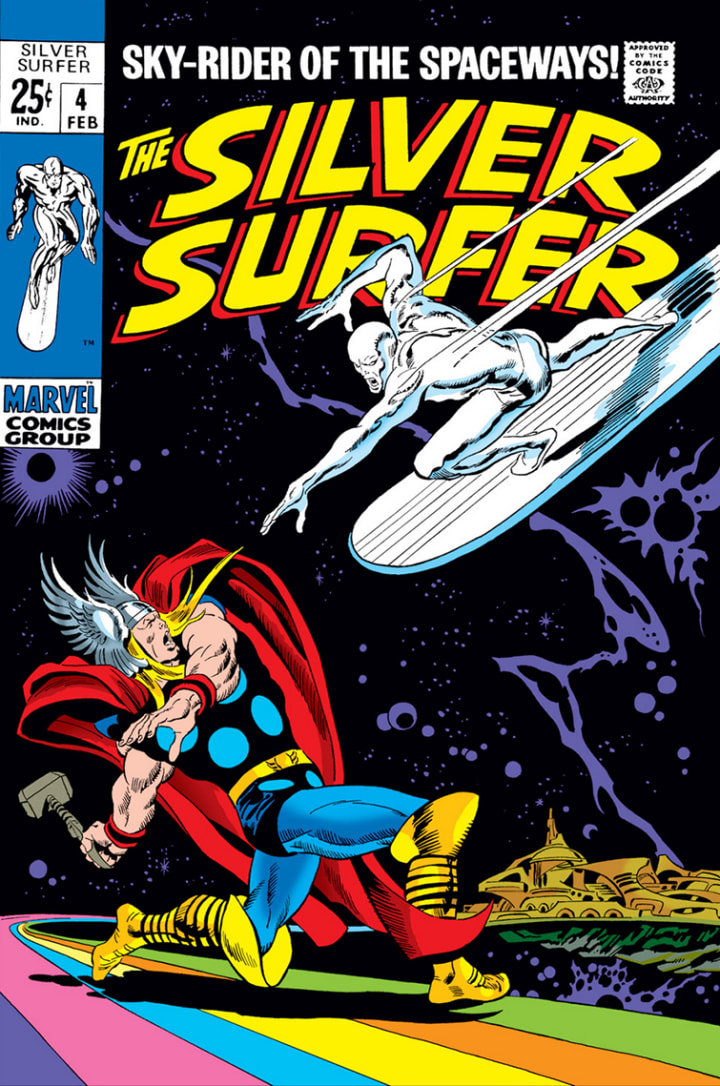
Unlike Steve Ditko or Jack Kirby, John Buscema didn't create Thor, the Silver Surfer, the Avengers, the Sub-Mariner, or Conan the Barbarian. But he did provide what many consider the definitive versions of all of them. Buscema became prominent in the 60s working on the Avengers, then got even bigger in the 70s with his long run on the hit "Conan the Barbarian" title, as well as its spin-offs, "Savage Sword of Conan" and "King Conan." During his time, Buscema provided many iconic covers and splash pages, with one of the most famous being the cover of "Silver Surfer" #4, seen above.
Gil Kane

It's hard to say what was the biggest contribution Gil Kane made to comics, but a good guess would be that at the start of the Silver Age, 1959, he introduced readers to Hal Jordan, the new Green Lantern, as well as the supporting cast and the concept of the Green Lantern Corps and the Guardians of the Universe. Kane also co-created the Silver Age Atom, Hulk's nemesis the Abomination, Iron Fist, and Morbius. Kane had a unique talent for character design, as evident when he gave Captain Marvel his new look. Kane's long run on "The Amazing Spider-Man" took place after the already legendary stints of Steve Ditko and John Romita, and it included the definitive story "The Night Gwen Stacy Died", which featured the deaths of both the original Green Goblin and Gwen Stacy, the love of Peter Parker's life.
Neal Adams
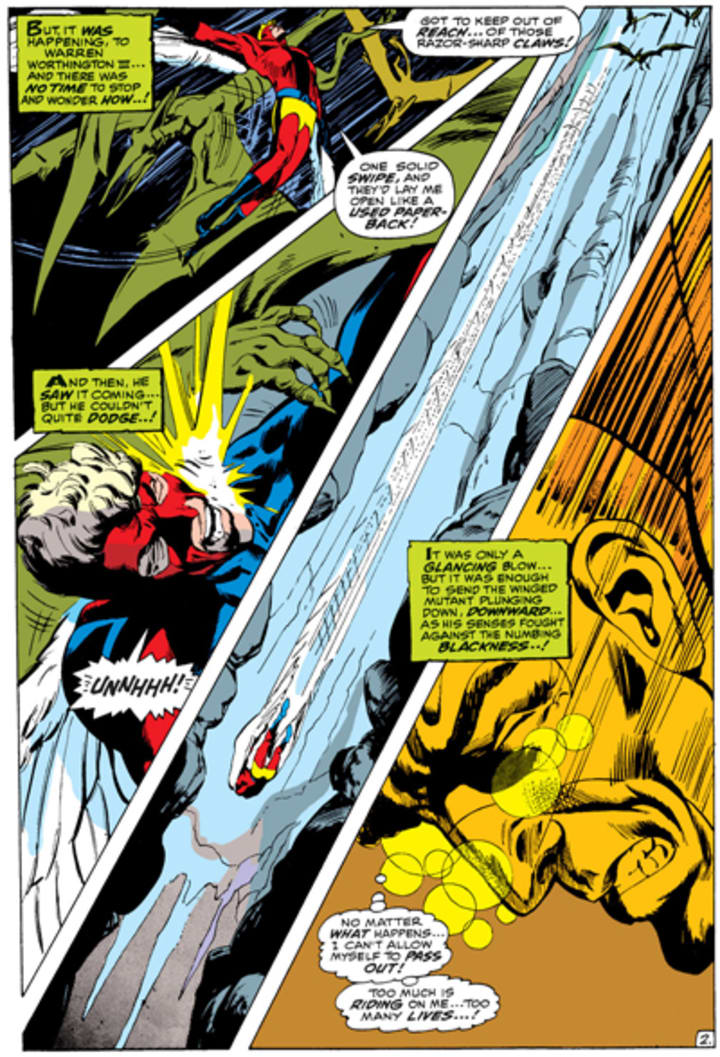
As with several of the other artists mentioned here, it's hard to gauge what Neal Adams' best-known or biggest accomplishment has been. He was a champion of creator's rights, fighting for those who co-created legendary characters but were living in poverty while the companies they worked for earned millions in licensing and other sales; he started his own successful art studio that ran parallel to his comics career; and he redesigned and co-created many iconic characters. Probably what's best to say is that Adams was responsible for some of the best-known periods and storylines of many titles, and sometimes he was given the task of outright trying to save failing books.
Adams came to prominence working for DC, where he co-created Deadman, gave Green Arrow his iconic all-green costume, and made Batman a serious and popular character again in the wake of the enormously popular but campy 1960s TV series. Still at DC, Adams worked with writer Denny O'Neil to relaunch the Green Lantern series as "Green Lantern/Green Arrow", one of the most noteworthy series of the 1970s and of all time.
At Marvel, Adams himself asked to work on "X-Men" because it was Marvel's worst-selling title, in danger of cancellation. It was cancelled despite Adams' efforts, though sales did improve dramatically, and while on the title, he designed and introduced the characters of Havok, Sauron, and Sunfire, and designed a new costume for Angel, which would be the character's definitive costume for decades. While working on "The Avengers" Adams had another definitive run, which included the legendary "Kree-Skrull War" saga.
Aside from groundbreaking character design, what made Adams stand out was his unique method of page design. Prior to Adams, comic pages were very static and confined. Each page was maybe 3-6 panels of art, read left to right, top to bottom, each one rectangular or square shape, with an occasional full page of art thrown in for dramatic effect. Adams tossed out all of the rules. With his page design, a panel could be any shape. There could be a triangular panel next to a square panel, with a gap in-between. Characters or objects could actually extend outside of a panel to give the page the feel of a 3-D movie. Adams even famously featured an X-Men cover in which a character was grabbing the title of the book.
Jim Steranko
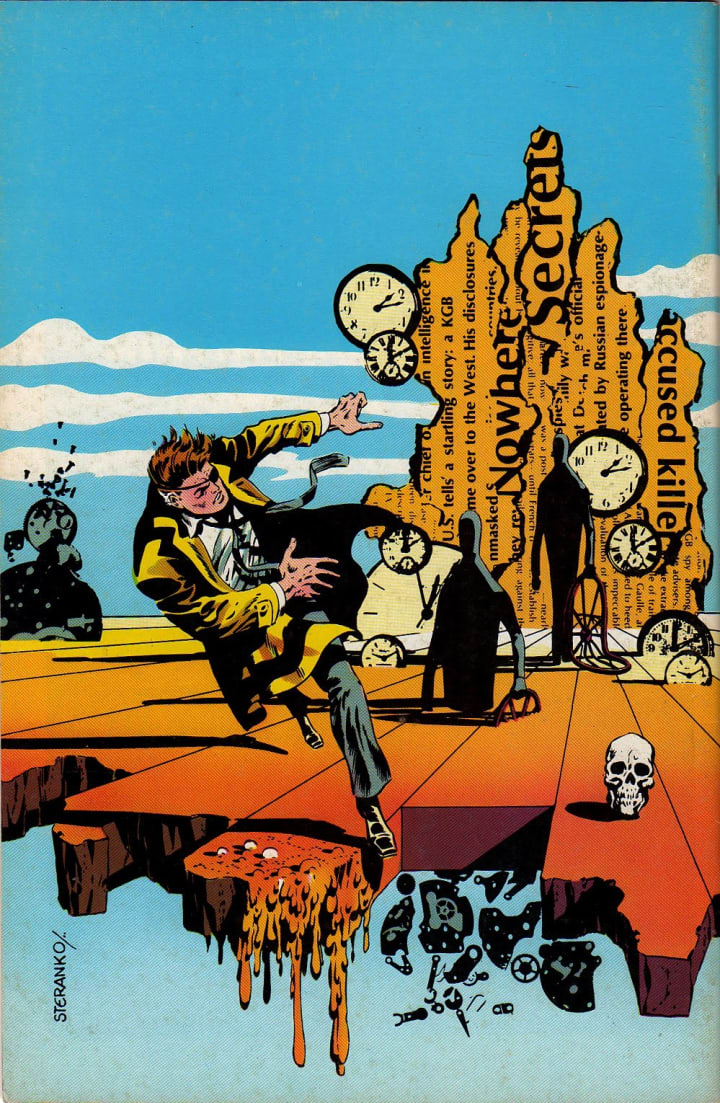
Like his contemporary Neal Adams, Jim Steranko broke all the rules. He brought the art in comics out of the panels. He showed things from odd perspectives and included other snippets of art to make pages and covers look entirely different. He took books with characters who should have been spies or action heroes and made them infinitely more exciting by making the art psychedelic, sexy, mysterious.
Steranko's key work was on two titles, often related at the time: "Captain America" and "Nick Fury, Agent of SHIELD." Here Steranko co-created the character Madame Hydra, aka Viper, the head of the criminal organization Hydra. The character has gone on to plague Captain America, Wolverine, and the Marvel Universe ever since. During his run on "X-Men," immediately preceding Neal Adams' run, Steranko co-created the character Polaris and provided several iconic covers. But no covers were more ground-breaking or iconic than those he provided for "Nick Fury, Agent of SHIELD," in which Steranko referenced the art of Salvador Dali, definitively merging the worlds of fine art and comic art.
Jim Aparo

Jim Aparo's career began in the 50s, and he worked at Charlton Comics long before going to DC, including a long run on the classic character the Phantom. But it was Aparo's time at DC, particularly his work on Batman, for which he is best known. Aparo initially worked on Aquaman and the Phantom Stranger, and also a controversial series involving the supernatural spirit of vengeance the Spectre that was particularly graphic at the time. But eventually Aparo was assigned a fill-in issue on "The Brave and the Bold," which had become a team-up series featuring Batman. This became Aparo's regular assignment, which led to a long, rare record in which Apara pencilled, inked, and lettered the comic himself. This record continued for years, even as he continued to provide art for Batman stories in "Detective Comics," Batman-related mini-series, and the main "Batman" title. Aparo's involvement with the character continued into the 1990s, including the team book The Outsiders, which he co-created. and the groundbreaking story "A Death in the Family," which featured the death of Jason Todd, the second Robin.
Bob Layton

Definitive Iron Man artist. That's the title typically given to Bob Layton, and one he wears proudly. Given that the character was co-created by Jack Kirby and has also been drawn by Steve Ditko, Jim Lee, and John Romita, Jr. among others, it's quite a proud title to have, and it's well-deserved. Before Bob Layton drew Iron Man, the art never really stood out, and even the stories weren't very memorable. When Layton was on the book, particularly when working with writer David Michelenie, the title became popular enough to go from bi-monthly to monthly publication, and it featured such key storylines as "Armor Wars," "Demon in a Bottle," and the introduction of War Machine.
Frank Brunner

Frank Brunner started working on the horror-themed magazines of the 1970s, such as "Creepy" and "Vampirella" befortgoing to work at Marvel on some of the horror-themed titles like "Tomb of Dracula" and "Man-Thing." Those titles allowed artists to do more with unusual imagery and shading than the more mainstream titles. The same could be said of the title that made Brunner famous, "Dr. Strange." With Brunner's art and writing by Steve Englehart, "Dr. Strange" has been called one of the top 10 best Marvel titles of the 1970s.
Mike Ploog

Mike Ploog is another artist known primarily for his work in horror comics, starting with "Creepy" and "Vampirella," before moving to Marvel and taking on Man-Thing, Ghost Rider, the Monster of Frankenstein, and Werewolf by Night.
Gene Colan

Gene Colan worked in comics for many years before becoming a mainstay at Marvel. He rose to prominence working on "Daredevil," becoming one of the definitive artists for the character, and giving Black Widow (at the time Daredevil's co-star and partner) her more modern look and costume. On "Captain America," he and Stan Lee co-created the Falcon, the first African-American super hero. In the 1970s, Colan rose to super-star status when he provided art for the entire 70-issue "Tomb of Dracula" series, which was enormously popular. He also provided most of the art for the surprise hit "Howard the Duck." While on the Dracula title, Colan co-created the vampire hunter Blade.
Berni Wrightson

Another artist who came to prominence in horror comics, Berni Wrightson provided art for Marvel and DCs anthology titles such as "Chamber of Darkness" and "Tower of Shadows" before co-creating the now-iconic character Swamp Thing in "House of Secrets." That character was given his own series, with Wrightson providing art for the first 10 issues. He also co-created the character Destiny, who went on to become a recurring character in Neil Gaiman's "Sandman" series.
Unlike other artists who started at Warren Publishing and moved to Marvel or DC, Wrightson started at DC and left for Warren, continuing his career in horror-themed comics. For 10 years he worked on art to accompany a special edition of Mary Shelley's novel "Frankenstein," with an introduction by Stephen King. He and King collaborated on the graphic novel adaptation of the King film "Creepshow" as well as on King's novella "Cycle of the Werewolf."
Later in his career, Wrightson brought his horror-themed art back to superhero comics, including the supernatural hero Deadman, and an acclaimed Batman mini-series, "Batman: The Cult."
George Perez

There's detailed comic art, and then there's George Perez-level detail. Perez set the record for having the most characters ever on one comic page, made when he worked on "Crisis on Infinite Earths" for DC, then broke his own record years later when providing the cover for a special collected edition of the series. Perez drew so many characters for the cover he gave himself carpal tunnel syndrome, which he only treated after he finished the project.
With his talent for cramming characters in a scene, Perez came to be known as one of the greatest Avengers artists of all time, working during two of the greatest periods of the book, first in the 1970s, then again during the "Heroes Return" re-launch of the series with writer Kurt Busiek. In-between he had acclaimed runs on "Wonder Woman," "New Teen Titans" and "Justice League of America." Busiek and Perez teamed up again for the legendary mini-series "JLA/Avengers," for which he drew every character who had ever been a member of either team, as well as versions of characters seen over the entire history of both teams.
John Byrne

As with other artists here, it's hard to choose what John Byrne's most noteworthy achievement has been. Starting out as an artist, by the time Byrne was working for Marvel in the 1970s he was also co-plotter, often working alongside writer Chris Claremont on titles including "Marvel Team-Up," "Iron Fist," and of course "X-Men." Later Byrne was both artist and writer on books including "Fantastic Four," "Alpha Flight," "She-Hulk," "Namor," and his landmark reboot of "Superman." While on "X-Men," Byrne co-created the first Canadian super-team Alpha Flight, as well as characters Kitty Pryde, Dazzler, Emma Frost, and the Hellfire Club. Other creations and co-creations include Sabretooth, Scott Lang (Ant-Man), Bishop, Omega Red, Rachel Summers, and the new Brotherhood of Evil Mutants. His tenure on "X-Men" and "Fantastic Four" are considered among the best periods for the titles.
Dave Cockrum

While the John Byrne and Chris Claremont run on "X-Men" is usually identified as one of the greatest in comics, it's important to note that Dave Cockrum started that run, and he came back to it after Byrne left, and the title remained great. A longtime comics fan, Cockrum's career began at DC, where he redesigned and updated many of the characters for the Legion of Super-Heroes, leading to a popular run on that book. Leaving DC for Marvel, Cockrum's character designs were used for the new characters Storm, Nightcrawler, and Colossus, who first appeared in "Giant-Size X-Men" 1. He then became the regular artist with the relaunched "X-Men" title, where he and Chris Claremont introduced the character Phoenix in issue 101, and the cosmic characters the Starjammers and the Shi'ar Imperial Guard, the latter of whom were based on Cockrum's designs for the Legion of Super-Heroes. Later, Cockrum co-created the Spider-Man anti-heroine the Black Cat.
Bill Sienkiewicz

Coming to prominence in the 1980s on titles such as "Moon Knight" and "New Mutants" Bill Sienkiewicz departed from the standard realistic art of the 1970s and merged elements such as watercolor, collage, painting, and sketch art to provide a feel of comics as abstract art. His unique style was later used on the "Elektra: Assassin" series, written by Frank Miller, and on "30 Days of Night."
Dave McKean

Similar to his contemporary Bill Sienkiewicz, Dave McKean's art incorporates photography, painting, illustration, coloring, calligraphy and other elements to provide an abstract, disturbing feel. Often working with writer Neil Gaiman, McKean provided covers for Gaiman's entire "Sandman" series, as well as several unrelated graphic novels produced by the pair, and the series "Hellblazer." McKean provided all of the art for the landmark graphic novel "Arkham Asylum," written by Grant Morrison.
Brian Bolland
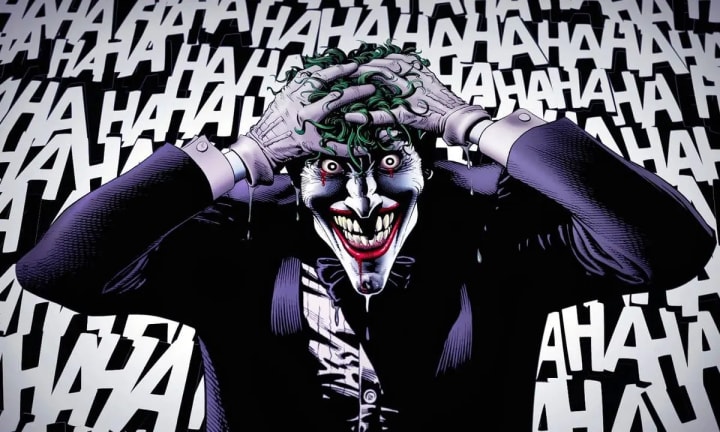
Brian Bolland began his career in British comics, becoming known as one of the definitive Judge Dredd artists in the 1980s. Bolland then worked in America, mainly for DC on titles such as "Camelot 3000" before illustrating the legendary graphic novel "Batman: The Killing Joke." Since then, Bolland's work has included lengthy runs on "Animal Man" and "The Invisibles" as well as "Wonder Woman."
Todd McFarlane
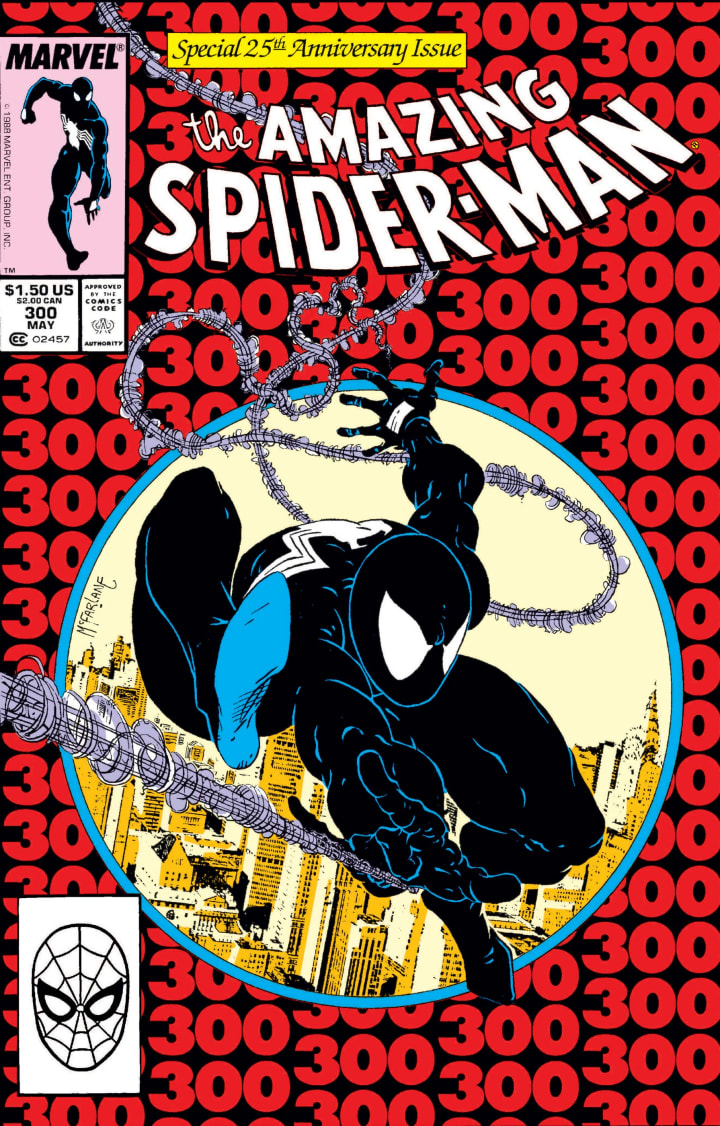
Two characters will forever be tied to the name Todd McFarlane: Spawn and Spider-Man. McFarlane of course created the character Spawn, whose self-titled series helped launch Image Comics in the 1990s. But before that, McFarlane drastically changed the way Spider-Man appeared for decades to come. Spider-Man's appearance had been largely static since the late 60s, until the drastic change brought about when he started using a black costume in the 1980s. But McFarlane started drawing the character as leaner, with larger eyepieces in his mask. He also made more use of Spider-Man's agility, putting him in odd contortions, particularly when web-swinging. And the webs themselves took on a different appearance - no longer the straight black rope they were typically shown to be, they often were shown with additional spirals around the center stream. The overall effect made Spider-Man comics seem more cartoonish, but also more exciting, with action on every page. Aside from creating all the major characters in the Spawn title, McFarlane co-created Eddie Brock and Venom during his time on "Amazing Spider-Man."
Jim Lee

Jim Lee's impact on the modern comic industry has been massive. Initially working on titles such as "Alpha Flight" and "Punisher War Journal," he eventually worked on Marvel's top title "Uncanny X-Men," driving it to even higher sales and co-creating the popular character Gambit. When the spin-off series "X-Men" was launched, featuring art by Lee, he provided new character designs for most of the key characters such as Cyclops and Psylocke. The first issue of that series remains the best-selling comic book of all time.
Lee co-founded Image Comics with his own creator-owned characters, but with Rob Liefeld came back to Marvel to work on the "Heroes Reborn" project, providing art for "Fantastic Four" and "Iron Man." Still later, Lee played a key role in relaunching DC's titles with the "new 52" project, and the acclaimed Batman storyline "Hush."
Alex Ross

In the Kurt Vonnegut novel "Bluebeard," the main character, an artist, is charged with the task of creating a painting that is indistinguishable from a photograph. Alex Ross could be that artist. With his love of classic comics from the 60s and 70s, as well as cartoons of the period, Ross brings life to recreated images of the Avengers, the Fantastic Four, Superman, and G-Force, with levels of color and detail so perfect one is inclined to think they're real.
Ross came to prominence on two key mini-series of the 90s, "Kingdom Come" for DC, and "Marvels" for Marvel, providing a future look at the heroes of DC and an overview of the complete history of the characters of Marvel. His other work includes covers for "Astro City," the series "Justice" at DC, "Earth-X" for Marvel, and countless special covers.
About the Creator
Gene Lass
Gene Lass is a professional writer, writing and editing numerous books of non-fiction, poetry, and fiction. Several have been Top 100 Amazon Best Sellers. His short story, “Fence Sitter” was nominated for Best of the Net 2020.
Reader insights
Outstanding
Excellent work. Looking forward to reading more!
Top insights
Expert insights and opinions
Arguments were carefully researched and presented
Eye opening
Niche topic & fresh perspectives
Compelling and original writing
Creative use of language & vocab
Easy to read and follow
Well-structured & engaging content
Heartfelt and relatable
The story invoked strong personal emotions







Comments (1)
Iron Man is my fave